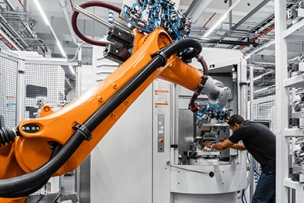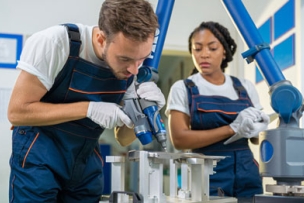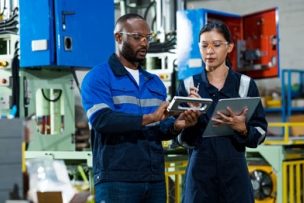Seco is one of the world’s largest providers of comprehensive metal cutting solutions for milling, stationary tools, holemaking and tooling systems. For over 80 years, we have been more than just a cutting tool provider. We develop and supply the technologies, processes and supports that manufacturers depend on to maximize productivity and profitability.
One of the first questions Patrick De Vos gets in a typical meeting with customers of Seco Tools is about the barrage of industry buzzwords hinting at sophisticated approaches to boosting long-term bottom lines: sustainable machining, economic machining and optimized machining.
“What does it all mean?” they ask, with a follow-up question like, “Whenever people start talking about that, they throw around complex mathematics, and my little company doesn’t have time for all that. Can’t you come up with some easy-to-understand guidelines?”
Yes, he can.
As the senior consultancy expert and corporate manager of technical education programs at Seco, a unit of Stockholm-based Sandvik Group, De Vos’ responsibilities include advising clients on how they can put their tools to work most effectively and profitably.
To do so, he often employs the concepts described in those buzzwords, translating them into everyday language to show machine shop owners how front-end strategizing can avoid frantic back-end scrambles to resolve costly machine breakdowns and other job interruptions.
Effective machine-job organization considers three concepts that are structured like a funnel, from broad ideas such as sustainable machining to narrower tactics related directly to execution:
1. Sustainable Machining
While the term sustainability is commonly used to refer to environmentally friendly practices, it’s also applied much more broadly. At its simplest, says De Vos, it’s doing things today in such a way that you can continue doing them tomorrow.
For machinists, that means building competitively priced products that meet the needs of customers, provide quality throughout their life cycle—from design to production, usage and recycling—and reduce environmental impact and energy usage to a level in balance with the planet’s carrying capacity.
Characteristics of sustainable machining include competitive pricing, efficient processes, fast response times, short lead times, low working capital and safeguarding knowledge and skills, De Vos says. A motivated workforce is the cornerstone that ties everything together.
2. Economic Machining
Economic machining focuses on developing and improving the production process so that it’s the best the company can achieve in terms of minimizing cost and time.
That means ensuring equipment operators understand the machines they’re using, can recognize what they’re seeing and interpret it correctly. Most of the time, that requires looking at tools. The wear and tear on them will show the efficiency of the process.
“If you have that insight,” De Vos says, “that’s the moment we can make the jump beyond the technical stuff into machining from an economic perspective.”
An important part of economic machining is smarter tool selection, which should be done in line with key performance indicators for productivity, economy, versatility and quality.
The correct tools can, for example:
- Support efficiency, in terms of both cost and time (Economy)
- Assure a trouble-free process that delivers finished products of consistently high quality (Quality, Productivity)
- Support strategic variability and flexibility in production (Versatility)
Next comes what De Vos refers to as knowing your playground, or determining what can be expected from the tool you select once you bring it into your workplace.
That means considering constraints such as chip formation and evacuation, mechanical and chemical loads on the cutting edge and demands for quality of the machined surface.


.jpg?itok=clvY6OP5)






Talk to Us!
Leave a reply
Your email address will not be published. Required fields are marked *